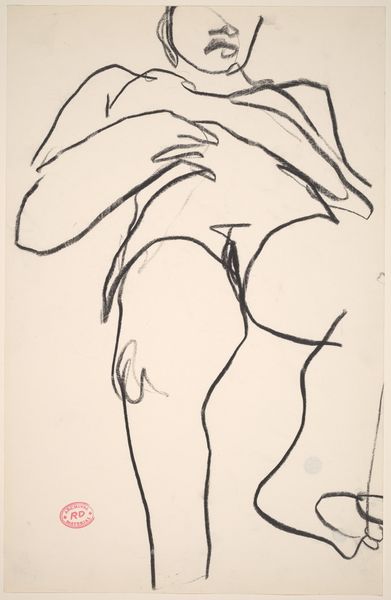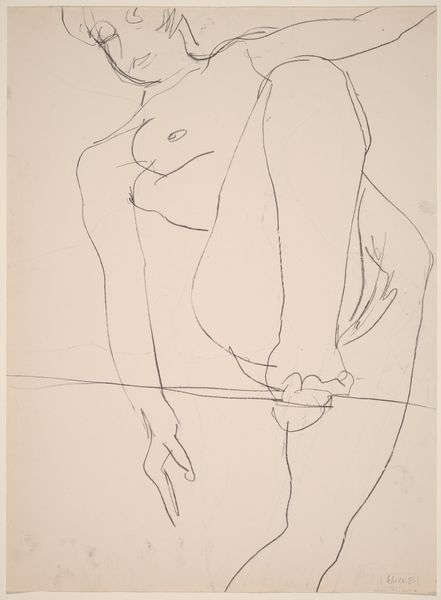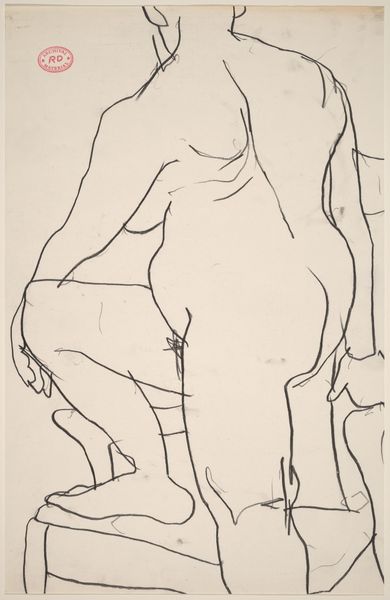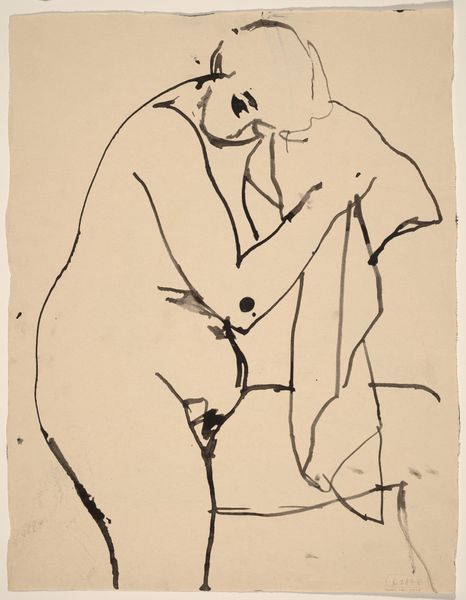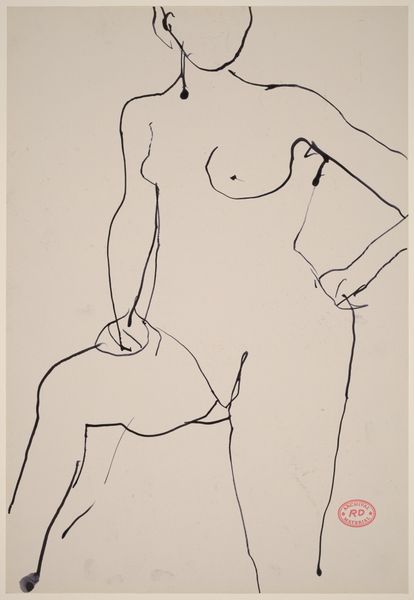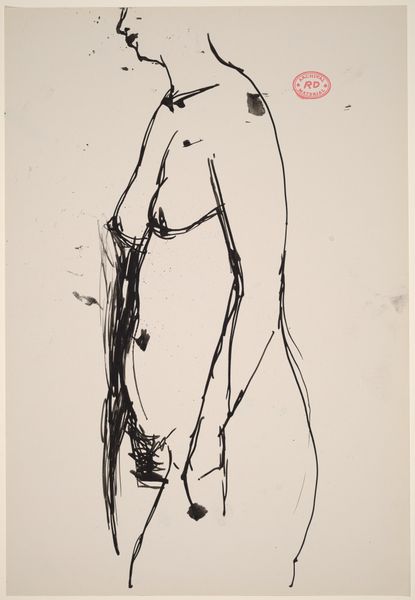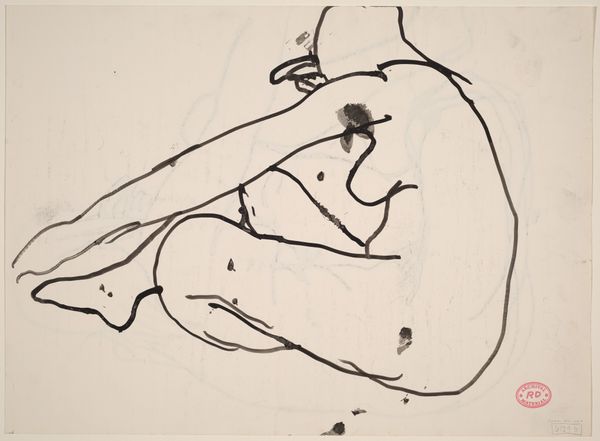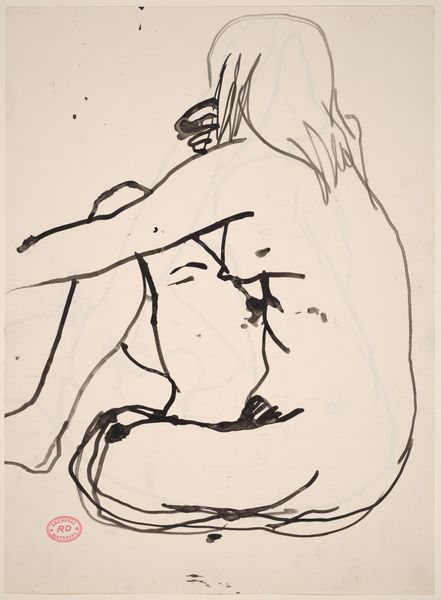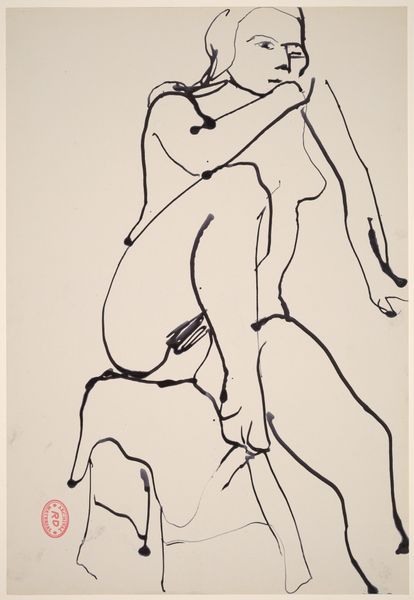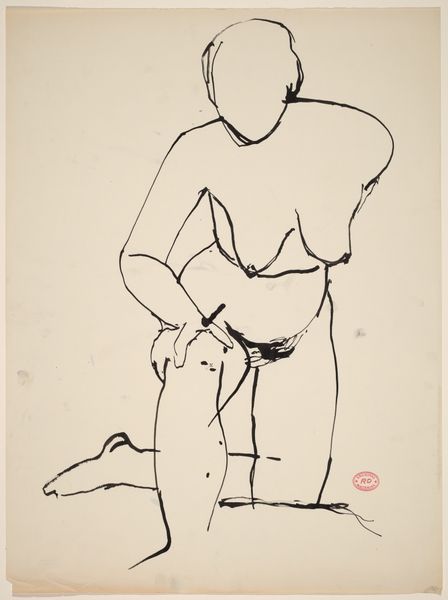![Untitled [female nude standing in front of an armchair] by Richard Diebenkorn](/_next/image?url=https%3A%2F%2Fd2w8kbdekdi1gv.cloudfront.net%2FeyJidWNrZXQiOiAiYXJ0ZXJhLWltYWdlcy1idWNrZXQiLCAia2V5IjogImFydHdvcmtzLzliOTE3NTI1LTU2YTItNDAwMy1hYTlmLTYyMTFlNzZkZDI4Ni85YjkxNzUyNS01NmEyLTQwMDMtYWE5Zi02MjExZTc2ZGQyODZfZnVsbC5qcGciLCAiZWRpdHMiOiB7InJlc2l6ZSI6IHsid2lkdGgiOiAxOTIwLCAiaGVpZ2h0IjogMTkyMCwgImZpdCI6ICJpbnNpZGUifX19&w=3840&q=75)
Untitled [female nude standing in front of an armchair] 1955 - 1967
0:00
0:00
drawing, ink
#
portrait
#
drawing
#
ink drawing
#
pen sketch
#
bay-area-figurative-movement
#
ink
#
abstraction
#
portrait drawing
#
nude
Dimensions: overall: 40.3 x 27.6 cm (15 7/8 x 10 7/8 in.)
Copyright: National Gallery of Art: CC0 1.0
Editor: Here we have Richard Diebenkorn's "Untitled [female nude standing in front of an armchair]," an ink drawing made sometime between 1955 and 1967. The stark black lines against the white paper create a sense of vulnerability, a directness in the figure's posture. How would you interpret this work? Curator: What immediately strikes me is the interplay between intimacy and objectification, something deeply ingrained in the history of nude studies. Consider the male gaze, a prevalent power dynamic that has historically shaped the representation of women in art. How do you see Diebenkorn engaging with, or perhaps subverting, this dynamic here? Editor: I see it in the subject's stance: arms crossed as if guarding herself. But, if the intent was guarding, couldn't it also be read as a moment of the everyday: someone cold, waiting in a room? Curator: Precisely! That tension between vulnerability and the everyday is key. Remember that Abstract Expressionism, a major movement at the time, often emphasized the artist's gesture, their direct action on the canvas. This drawing shares that rawness. It invites us to consider not just the figure, but the artist's act of observation and mark-making. It prompts reflection on who has historically been allowed to look, and on whose terms. Editor: That's interesting. It really brings forward the idea of how the viewer can also project intent and narrative into the simplest sketch, changing its whole meaning and weight. Curator: Exactly. The drawing becomes a space for negotiation between the artist, the subject, and, crucially, the viewer, challenging our expectations and assumptions around the nude. Editor: I've definitely learned to look past the figure itself and more toward the power dynamics present. Curator: And that's the vital first step. To continually question the context, not just the subject, of any work we encounter.
Comments
No comments
Be the first to comment and join the conversation on the ultimate creative platform.
